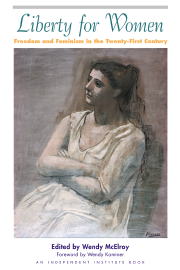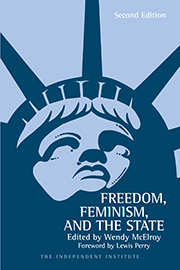Perhaps nothing else could be expected from the leadership of publisher Arthur Sulzberger, Jr. Edwin Diamond’s book Behind the Times quotes Sulzberger as stating, “We can no longer offer our readers a predominantly white, straight, male vision of events.”
Former Times reporter Nan Robertson explains that Sulzberger calls himself a feminist and she points to his deep admiration of author Marilyn French, renowned for male-bashing. In her book The War Against Women, French states, “Men’s need to dominate women may be based in their own sense of marginality or emptiness; we do not know its root, and men are making no effort to discover it.”
For years, the Times—America’s “newspaper of record”—has been a vehicle for political correctness in both subtle and blatant ways. Examining its policies provides an interesting window into the anti-male and liberal bias rampant in most current media.
Those policies dictate:
1) Who is hired.
In an article entitled “The Degradation of the New York Times,” Joseph Epstein—former editor of the American Scholar—writes, “the true politics of the new New York Times are to be found at work on the issues of feminism, racism, homosexuality—usually funneled through the totem of ‘diversity,’ which, reinforced by political correctness, I prefer to think of as totalitarian pluralism.” Epstein adds, “The way Sulzberger has backed up his conviction is not only through the writing he publishes but also through hiring and promotion practices inside the paper.”
No wonder Blair was forgiven over and over again for gross inaccuracies and flat fabrication. Times Executive Editor Howell Raines’ explanation was, “as a white man from Alabama” he gave Blair too many chances. Would another reporter, if he was also a white man from Alabama, been given no chance at all?
2) Which stories receive coverage.
William McGowan’s iconoclastic book Coloring the News chronicles the media distortions caused by political correctness. McGowan is especially critical of the Times, which in its crusade for “diversity” and sensitivity to minorities, has sacrificed both accuracy and balanced coverage. For example, he points out, ”The New York Times runs a long, admiring article identifying Patrick Chavis, a black doctor in Los Angeles, as evidence that affirmative action in medical schools is working the way it was meant to, by bringing good doctors into minority neighborhoods. Later, after many botched operations and a patient’s death, Chavis loses his license. The Times never reports it.”
3) How studies and statistics are reported.
In his article “Unfit to Print: Case Study in Deceit at the New York Times,” men’s rights activist Carey Roberts described the misrepresentation of a report from the General Accounting Office (GAO) on the status of women’s health research at the National Institutes of Health (NIH).
The “Results in Brief” section of the study (pp. 6-7) offers its conclusions, “In the past decade, NIH has made significant progress in implementing a strengthened policy on including women in clinical research.... More than 50 percent of the participants in clinical research studies that NIH funded in fiscal year 1997 were women, according to NIH. Even when studies with female-only or male-only protocols are removed from the data, the proportion of women enrolled exceeded 50 percent.”
The GAO report shows that the NIH actually neglected men’s health in 1997. For example, men constituted only 37% of participants in extramural research studies (Figure 1); 740 female-only studies were funded, but only 244 male-only ones (Table 2). Nevertheless, the Times story—written by a medical reporter who should know how to read NIH studies—bore the headline “Research Neglects Women...” The slighting of men was not mentioned.
Such exposés in the powerful Times have real-world impact. As Roberts points out, “Responding to the public outcry over the fabricated ‘neglect’ of women’s health, the Women’s Health Office Act, S. 2675, was introduced in the 106th Congress. The bill was read on June 6, 2000, just five weeks after the Times article appeared.”
4) Which books are reviewed.
In his book Women Can’t Hear What Men Don’t Say, author Warren Farrell carefully documents the extreme bias with which the inordinately influential Times Book Review section chooses titles to spotlight. Farrell writes, “man-haters like Marilyn French and Andrea Dworkin” have “every book they write reviewed while books written by men who articulate the issues of adult men with compassion and criticize the feminist perspective have none of those books reviewed.”
Farrell comments on the impact of the NYT bias. “When The New York Times Book Review ignores a book it sends a message: “You are not one of the players.” Other media take the cue. When it systematically ignores books on a topic with one point of view and gives double reviews to books with the opposite perspective, the violation is not just one of journalistic ethics, but of the responsibility of power.”
The Times is no longer a player on any team that values truth, accuracy, or men. The Old Gray Lady is like the Old Gray Mare...she ain’t what she used to be. Putting her to pasture would be a kindness.









